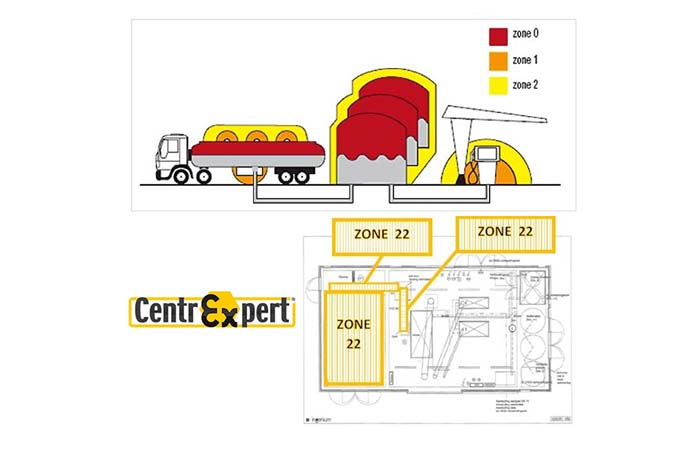Category : Services & Training -> Zoning
ATEX zoning

Contact last name and first name
Thierry MAURICE
posted the
29/07/2018
views
2388
| Society | Compliance code | Usable in Zone | ||
| CentrExpert | INERIS | Zone 1 Zone 2 | ||
ATEX zoning - DRPCE
CentrExpert atex zoning, our methodology, our DPRE
Zoning atex is one of the responses provided by the European Union to limit the occurrence of accidents such as Feyzin (explosion following a propane leak near a motorway, Rhône, 1966), Blaye (explosion of a silo of cereals, Gironde, 1997),… To achieve a good atex zoning, it is important to control a certain number of factors.
The European regulations against the risks of explosions (directive n ° 94/9 / CE and directive n ° 99/92 / CE) have been transposed into French law in articles R4227-42 to 54 of the Labor Code.
These articles require any operator of an explosive atmosphere to :
- Prevent the formation of an Explosive Atmosphere (ATEX).
- Avoid their inflammation, if we can not prevent their formation.
- Mitigate the harmful effects.
For this, the operator must :
- Subdivide into zones the locations in which ATEX can occur.
- Establish and update an Explosion Protection Document - DRPE - integrated into the Single Document, which constitutes an explosion risk assessment and associated action plan.
CentrExpert will provide you with an experienced consultant to :
- Identify the activities of your company likely to generate ATEX.
- Carry out the ATEX zoning of these locations.
- Establish the explosion risk analysis in each of these zones, based on the probability of igniting an ATEX zone and on the severity of this explosion.
- Write the DRPE by establishing measures to ensure compliance with the recommendations of the Labor Code in matters of explosion.
CentrExpert also supports you in carrying out a macroscopic atex audit of the suitability of electrical and non-electrical equipment present in the ATEX zone. This atex audit is based on markings accessible only on the equipment (engine plate, etc.).
CentrExpert can assist you in setting up a new activity likely to produce an ATEX by anticipating:
the choice of raw materials used
means of control (eg installation of ventilation at a sufficient flow rate to control the ATEX risk generated by vapors of flammable liquids)
the choice of equipment located in the area
More information on http://www.centrexpert.com